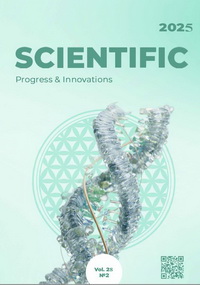Formation of sunflower productivity (Helianthus annuus L.) depending on agrotechnical methods
DOI:
https://doi.org/10.31210/spi2025.28.02.13Keywords:
sunflower, hybrid, fertilization, plant density, yield, qualityAbstract
The article examines current sunflower (Helianthus annuus L.) cultivation trends in Ukraine in the context of the growing global demand for sunflower oil. Annual sunflower remains one of the priority field crops in Ukraine, occupying approximately 25–29 % of the total sown area. The high global demand for sunflower oil and the advancement of agrotechnology have contributed to a significant expansion of sunflower cultivation areas, which, despite the ongoing war, remain not only consistently high but also show potential for further growth. Particular attention is given to the impact of mineral fertilization on the realization level of the productive potential of sunflower hybrids. The effective application of mineral fertilizers is a key factor in increasing yield and improving the quality characteristics of seeds. However, under conditions of ongoing climate change, accompanied by increasing moisture deficits, the effectiveness of fertilizers may be insufficiently realized. It is found that an optimal fertilization system should consider the type of fertilizer, timing, method, and application rate following the 4-R strategy. Research results indicate that sunflowers respond positively to mineral nutrition under typical growing conditions, particularly when phosphorus and sulfur are applied, contributing to increased yields and higher oil content in the seeds. Excessive nitrogen fertilization may stimulate vegetative growth while reducing oil content. The relationship between plant density and productivity is analyzed concerning the agro-climatic zone. The study also emphasizes the importance of considering hybrid-specific characteristics, as different genotypes respond differently to growing conditions and fertilization levels. The optimal plant density varies depending on the zone, moisture conditions, and hybrid, ranging from 50,000 to 90,000 plants/ha. In arid conditions, fertilizer efficiency decreases, highlighting the need for adapted technologies, including sulfur-enriched fertilizers and precision application. Future research should study the interactions between fertilizers, hybrid-specific traits, and moisture conditions to enhance crop productivity under climate change.
Downloads
Published
How to Cite
Issue
Section
License
Copyright (c) 2025 Scientific Progress & Innovations

This work is licensed under a Creative Commons Attribution 4.0 International License.

 Creative Commons Attribution 4.0 International Licens
Creative Commons Attribution 4.0 International Licens